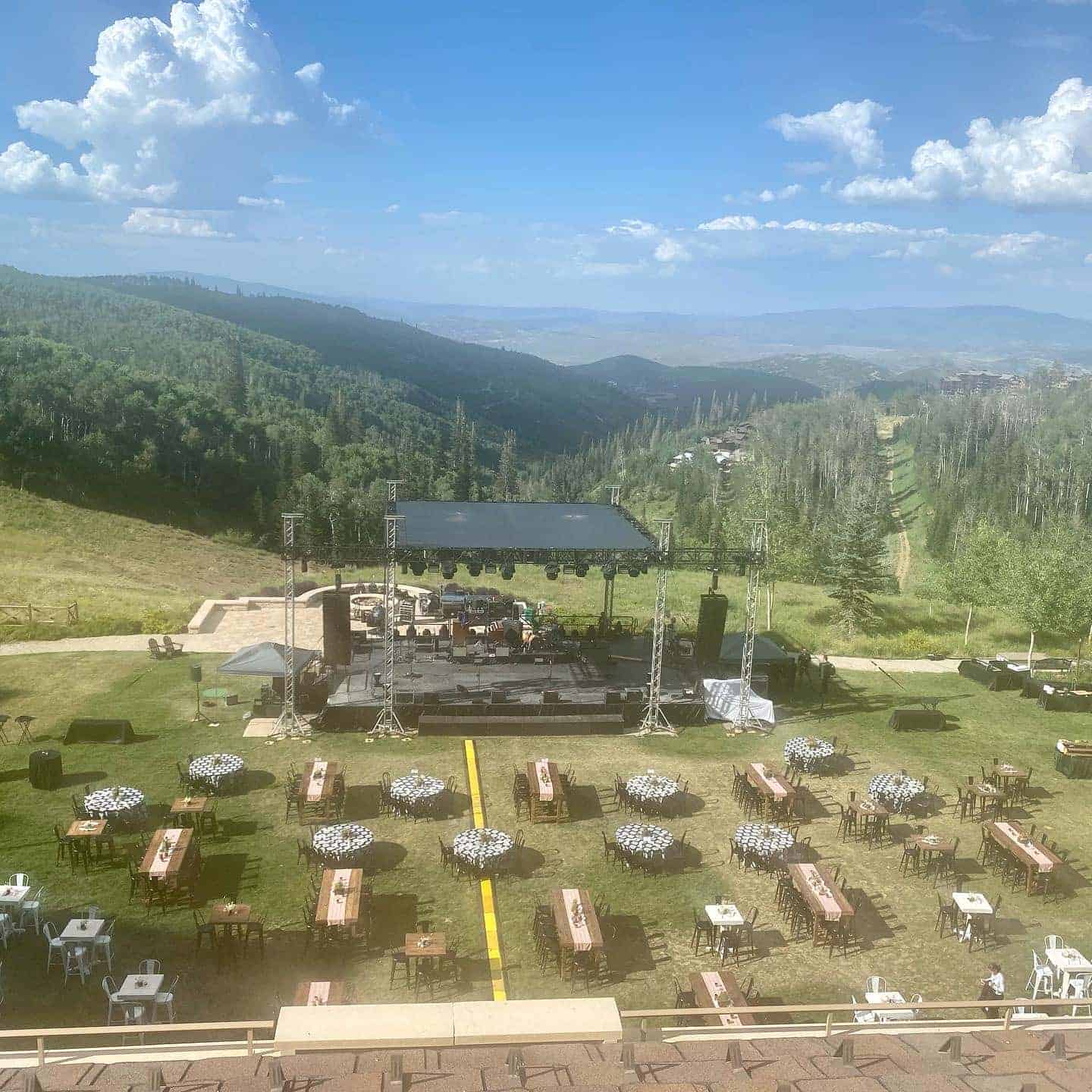Home - Artists - $750,000 + - Sting
Book Sting

Imagine Sting Headlining Your Event!
The staff of Headline Booking Group will work with you to produce a flawless and memorable event. Get started now by filling out our no-obligation Artist Request Form.
Biography
Sting Biography
Sting
🎤 Sting – From The Police Frontman to Solo Icon
Sting, born Gordon Matthew Thomas Sumner, is a British singer, songwriter, and musician known for his poetic lyrics, genre-spanning compositions, and magnetic stage presence. From his early days with The Police to his wide-ranging solo work, Sting remains a global music icon and a visionary artist.
🌟 About Sting
Born October 2, 1951, in Wallsend, England, Sting began his career as a schoolteacher before co-founding The Police in 1977. The band’s fusion of reggae, punk, and rock catapulted them to global stardom with hits like “Roxanne,” “Message in a Bottle,” and “Every Breath You Take.”
In 1985, Sting launched a solo career that allowed him to explore jazz, world music, classical, and more. His thoughtful, socially conscious lyrics and sophisticated musicianship have earned him worldwide acclaim.
Read more on Sting’s official biography
🎶 Genres & Style
-
Rock
-
Jazz
-
Reggae
-
World Music
-
Pop
Sting’s music blends storytelling with musical exploration. His solo work features intricate arrangements and global influences, while always maintaining the emotional clarity and melodic strength that define his sound.
🏆 Notable Achievements
-
🏆 17 Grammy Awards, both solo and with The Police
-
🕊️ Rock & Roll Hall of Fame inductee with The Police (2003)
-
🎖️ Kennedy Center Honors recipient (2014)
-
🌍 Polar Music Prize winner (2017)
-
✍️ Known for activism, philanthropy, and environmental advocacy alongside his music career
View his awards list on Grammy.com
🎧 Hit Songs
-
“Every Breath You Take” – A hauntingly iconic love song with The Police
-
“Roxanne” – The reggae-tinged anthem that made The Police famous
-
“Englishman in New York” – A jazzy, autobiographical solo classic
-
“Fields of Gold” – A warm, acoustic ballad about love and memory
-
“Desert Rose” (feat. Cheb Mami) – A crossover hit with Middle Eastern flair
🎥 Watch & Listen
📺 YouTube
Watch performances and music videos on Sting’s official YouTube channel
🎧 Spotify
Listen to Sting on Spotify
💡 Booking Appeal
Whether fronting a full orchestra or jamming acoustically, Sting’s shows are intimate, elegant, and deeply moving. His sophisticated sound and global appeal make him an ideal act for upscale, meaningful, and unforgettable live performances.
Perfect for:
-
International Music Festivals
-
Philanthropic Galas
-
Cultural & Arts Events
-
Corporate Experiences
-
Private VIP Concerts
🎤 Quote to Remember
“Music is its own reward.” – Sting
✨ Book Sting for an evening of musical depth, global resonance, and timeless elegance that only a legend can deliver.
Sting
🎤 Sting – From The Police Frontman to Solo Icon
Sting, born Gordon Matthew Thomas Sumner, is a British singer, songwriter, and musician known for his poetic lyrics, genre-spanning compositions, and magnetic stage presence. From his early days with The Police to his wide-ranging solo work, Sting remains a global music icon and a visionary artist.
🌟 About Sting
Born October 2, 1951, in Wallsend, England, Sting began his career as a schoolteacher before co-founding The Police in 1977. The band’s fusion of reggae, punk, and rock catapulted them to global stardom with hits like “Roxanne,” “Message in a Bottle,” and “Every Breath You Take.”
In 1985, Sting launched a solo career that allowed him to explore jazz, world music, classical, and more. His thoughtful, socially conscious lyrics and sophisticated musicianship have earned him worldwide acclaim.
Read more on Sting’s official biography
🎶 Genres & Style
-
Rock
-
Jazz
-
Reggae
-
World Music
-
Pop
Sting’s music blends storytelling with musical exploration. His solo work features intricate arrangements and global influences, while always maintaining the emotional clarity and melodic strength that define his sound.
🏆 Notable Achievements
-
🏆 17 Grammy Awards, both solo and with The Police
-
🕊️ Rock & Roll Hall of Fame inductee with The Police (2003)
-
🎖️ Kennedy Center Honors recipient (2014)
-
🌍 Polar Music Prize winner (2017)
-
✍️ Known for activism, philanthropy, and environmental advocacy alongside his music career
View his awards list on Grammy.com
🎧 Hit Songs
-
“Every Breath You Take” – A hauntingly iconic love song with The Police
-
“Roxanne” – The reggae-tinged anthem that made The Police famous
-
“Englishman in New York” – A jazzy, autobiographical solo classic
-
“Fields of Gold” – A warm, acoustic ballad about love and memory
-
“Desert Rose” (feat. Cheb Mami) – A crossover hit with Middle Eastern flair
🎥 Watch & Listen
📺 YouTube
Watch performances and music videos on Sting’s official YouTube channel
🎧 Spotify
Listen to Sting on Spotify
💡 Booking Appeal
Whether fronting a full orchestra or jamming acoustically, Sting’s shows are intimate, elegant, and deeply moving. His sophisticated sound and global appeal make him an ideal act for upscale, meaningful, and unforgettable live performances.
Perfect for:
-
International Music Festivals
-
Philanthropic Galas
-
Cultural & Arts Events
-
Corporate Experiences
-
Private VIP Concerts
🎤 Quote to Remember
“Music is its own reward.” – Sting
✨ Book Sting for an evening of musical depth, global resonance, and timeless elegance that only a legend can deliver.
Expand Full Bio
After disbanding the Police at the peak of their popularity in 1984, Sting quickly established himself as a viable solo artist,, one obsessed with expanding the boundaries of pop music. Sting incorporated heavy elements of jazz, classical, and worldbeat into his music, writing lyrics that were literate and self-consciously meaningful, and he was never afraid to emphasize this fact in the press. For such unabashed ambition, he was equally loved and reviled, with supporters believing that he was at the forefront of literate, intelligent rock and his critics finding his entire body of work pompous. Either way, Sting remained one of pop's biggest superstars for the first ten years of his solo career, before his record sales began to slip.
Before the Police were officially disbanded, Sting began work on his first solo album late in 1984, rounding up a group of jazz musicians as a supporting band. Moving from bass to guitar, he recorded his solo debut, 1985's The Dream of the Blue Turtles, with Branford Marsalis, Kenny Kirkland, and Omar Hakim. The move wasn't entirely unexpected, since Sting had played with jazz and progressive rock bands in his youth, but the result was considerably more mature and diverse than any Police record. The album became a hit, with 'If You Love Somebody Set Them Free,' 'Love Is the Seventh Wave,' and 'Fortress Around Your Heart' reaching the American Top Ten. Sting brought the band out on an extensive tour and filmed the proceedings for a 1986 documentary called Bring on the Night, which appeared alongside a live double album of the same name. That year, Sting participated in a half-hearted Police reunion that resulted in only one new song, a re-recorded version of 'Don't Stand So Close to Me.' Following the aborted Police reunion, Sting began working on the ambitious Nothing Like the Sun, which was dedicated to his recently deceased mother. Proceeding from a jazz foundation, and again collaborating with Marsalis, Sting worked with a number of different musicians on the album, including Gil Evans and former Police guitarist Andy Summers. The album received generally positive reviews upon its release in late 1987, and it generated hit singles with 'We'll Be Together' and 'They Dance Alone.'
Following its release, Sting began actively campaigning for Amnesty International and environmentalism, establishing the Rainforest Foundation, which was designed to raise awareness about preserving the Brazilian rainforest. An abridged Spanish version of Nothing Like the Sun, Nada Como el Sol, was released in 1988. Sting took several years to deliver the follow-up to Nothing Like the Sun, during which time he appeared in a failed Broadway revival of The Threepenny Opera in 1989. His father also died, which inspired 1991's The Soul Cages, a dense, dark, and complex album. Although the album peaked at number two and spawned the Top Ten hit 'All This Time,' the record was less successful than its predecessor. Two years later, he delivered Ten Summoner's Tales, a light, pop-oriented record that became a hit on the strength of two Top 20 singles, 'If I Ever Lose My Faith in You' and 'Fields of Gold.' At the end of 1993, 'All for Love,' a song he recorded with Rod Stewart and Bryan Adams for The Three Musketeers, became a number one hit. The single confirmed that Sting's audience had shifted from new wave/college rock fans to adult contemporary, and the 1994 compilation Fields of Gold: The Best of Sting played to that new fan base.
Three years after Ten Summoner's Tales, Sting released Mercury Falling in the spring of 1996. Although the album debuted highly, it quickly fell down the charts, stalling at platinum sales and failing to generate a hit single. Although the album failed, Sting remained a popular concert attraction, a feat that confirmed his immense popularity regardless of his chart status. Released in 1999, Brand New Day turned his commercial fortunes around in a big way, though, eventually going triple-platinum and earning two Grammy Awards. Issued in 2003, Sacred Love also did well, and Sting spent several years with the reunited Police before returning to his solo game for 2009's If on a Winter's Night.... One year later, he hit the road alongside the Royal Philharmonic Concert Orchestra, who added their own symphonic arrangements to his material. Symphonicities, a companion CD, and Live in Berlin, released in conjunction with the world tour, arrived that same year
After disbanding the Police at the peak of their popularity in 1984, Sting quickly established himself as a viable solo artist,, one obsessed with expanding the boundaries of pop music. Sting incorporated heavy elements of jazz, classical, and worldbeat into his music, writing lyrics that were literate and self-consciously meaningful, and he was never afraid to emphasize this fact in the press. For such unabashed ambition, he was equally loved and reviled, with supporters believing that he was at the forefront of literate, intelligent rock and his critics finding his entire body of work pompous. Either way, Sting remained one of pop’s biggest superstars for the first ten years of his solo career, before his record sales began to slip.
Before the Police were officially disbanded, Sting began work on his first solo album late in 1984, rounding up a group of jazz musicians as a supporting band. Moving from bass to guitar, he recorded his solo debut, 1985’s The Dream of the Blue Turtles, with Branford Marsalis, Kenny Kirkland, and Omar Hakim. The move wasn’t entirely unexpected, since Sting had played with jazz and progressive rock bands in his youth, but the result was considerably more mature and diverse than any Police record. The album became a hit, with ‘If You Love Somebody Set Them Free,’ ‘Love Is the Seventh Wave,’ and ‘Fortress Around Your Heart’ reaching the American Top Ten. Sting brought the band out on an extensive tour and filmed the proceedings for a 1986 documentary called Bring on the Night, which appeared alongside a live double album of the same name. That year, Sting participated in a half-hearted Police reunion that resulted in only one new song, a re-recorded version of ‘Don’t Stand So Close to Me.’ Following the aborted Police reunion, Sting began working on the ambitious Nothing Like the Sun, which was dedicated to his recently deceased mother. Proceeding from a jazz foundation, and again collaborating with Marsalis, Sting worked with a number of different musicians on the album, including Gil Evans and former Police guitarist Andy Summers. The album received generally positive reviews upon its release in late 1987, and it generated hit singles with ‘We’ll Be Together’ and ‘They Dance Alone.’
Following its release, Sting began actively campaigning for Amnesty International and environmentalism, establishing the Rainforest Foundation, which was designed to raise awareness about preserving the Brazilian rainforest. An abridged Spanish version of Nothing Like the Sun, Nada Como el Sol, was released in 1988. Sting took several years to deliver the follow-up to Nothing Like the Sun, during which time he appeared in a failed Broadway revival of The Threepenny Opera in 1989. His father also died, which inspired 1991’s The Soul Cages, a dense, dark, and complex album. Although the album peaked at number two and spawned the Top Ten hit ‘All This Time,’ the record was less successful than its predecessor. Two years later, he delivered Ten Summoner’s Tales, a light, pop-oriented record that became a hit on the strength of two Top 20 singles, ‘If I Ever Lose My Faith in You’ and ‘Fields of Gold.’ At the end of 1993, ‘All for Love,’ a song he recorded with Rod Stewart and Bryan Adams for The Three Musketeers, became a number one hit. The single confirmed that Sting’s audience had shifted from new wave/college rock fans to adult contemporary, and the 1994 compilation Fields of Gold: The Best of Sting played to that new fan base.
Three years after Ten Summoner’s Tales, Sting released Mercury Falling in the spring of 1996. Although the album debuted highly, it quickly fell down the charts, stalling at platinum sales and failing to generate a hit single. Although the album failed, Sting remained a popular concert attraction, a feat that confirmed his immense popularity regardless of his chart status. Released in 1999, Brand New Day turned his commercial fortunes around in a big way, though, eventually going triple-platinum and earning two Grammy Awards. Issued in 2003, Sacred Love also did well, and Sting spent several years with the reunited Police before returning to his solo game for 2009’s If on a Winter’s Night…. One year later, he hit the road alongside the Royal Philharmonic Concert Orchestra, who added their own symphonic arrangements to his material. Symphonicities, a companion CD, and Live in Berlin, released in conjunction with the world tour, arrived that same year
Sting Booking Request Form
Please fill out the form below. One of our booking agents will contact you within 24 hours to discuss your event in greater detail.
Our Services Include

Comprehensive needs assessment

Contacting and negotiating with celebrity talent representation


Serving as a liaison between your staff and the artist ensuring a flawless performance

You also might like

Pop & Disco

Adult Contemporary

Adult Contemporary

Adult Contemporary

Adult Contemporary

Adult Contemporary

Rock

Adult Contemporary

Adult Contemporary

Adult Contemporary
The Headline Booking Promise
At Headline Booking, we deliver unforgettable celebrity entertainment performances for private parties that create lasting impressions and lifelong memories. Our promise is a Gold Standard of service, so you can relax and enjoy the show while trusting that every detail will be executed flawlessly. When you choose Headline Booking, we provide:
Booking of your favorite A-list artist to perform at your private event
Contracting with the artist and coordination of all Artist travel logistics
Our staff to advance all details with you specific to your event
A professional on-site production team overseeing all concert details delivering a seamless experience to be enjoyed by all
